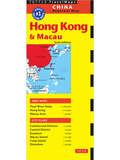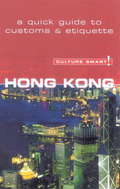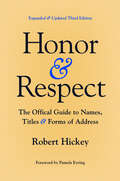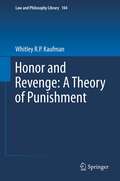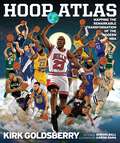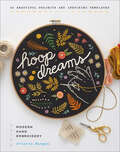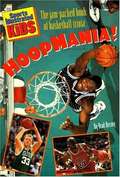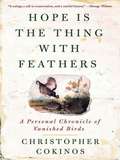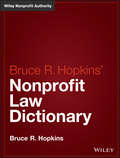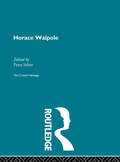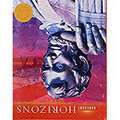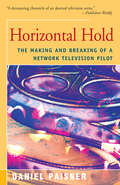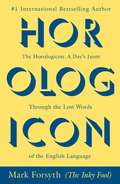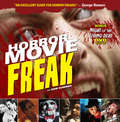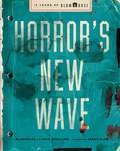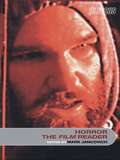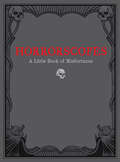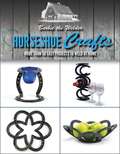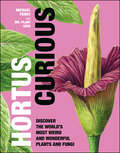- Table View
- List View
Hong Kong & Macau Travel Map
by Periplus EditionsHong Kong is a frenetic commercial hub and internationally-renowned city. This map is packed with all kinds of practical information and is unrivalled for this city in its clarity and quality of production. It is an essential item to any visitor's travel checklist. This fully-updated 3rd edition underlines the city's pre-eminence in the region for business travelers and holidaymakers alike by providing the very latest information in an easy-to-use style. A new map of the fast-growing Shenzhen Special Economic Zone has been added to this edition. This map features 5 fully-updated color maps packed with a variety of tourist facilities and the coverage of local travel network focusing on both the central districts of Hong Kong Island and Kowloon and the wider area of the territory. Includes an extensive index of streets and features a unique, easy-to-handle folding system allows the user to view the map one panel at a time for quick reference
Hong Kong & Macau Travel Map Sixth Edition
by Periplus EditorsThe Hong Kong & Macau Travel Map from Periplus is designed as a convenient, easy-to-use tool for travelers. Created using durable coated paper, this map is made to open and fold multiple times, whether it's the entire map that you want to view or one panel at a time.Following highways and byways, this map will show you how to maneuver your way to banks, gardens, hotels, golf courses, museums, monuments, restaurants, churches and temples, movie theaters, shopping centers and more!This 6th edition includes maps and plans that are scaled to: Area Maps: Pearl River Delta 1:1,000,000 Hong Kong Area 1:110,000 Macau Area 1:60,000City Plans: Commercial Districts 1:15,000 Central District 1:8,000 Tsim Sha Tsui 1:8,000 Macau Island 1:12,500 Cotai Island 1:18,000 Shenzhen 1:30,000Periplus Travel Maps cover most of the major cities and travel destinations in the Asia-Pacific region. The series includes an amazing variety of fascinating destinations, from the multifaceted subcontinent of India to the bustling city-state of Singapore and the 'western style' metropolis of Sydney to the Asian charms of Bali. All titles are continuously updated, ensuring they keep up with the considerable changes in this fast-developing part of the world. This extensive geographical reach and attention to detail mean that Periplus Travel Maps are the natural first choice for anyone traveling in the region.
Hong Kong - Culture Smart!
by Clare VickersCulture Smart! provides essential information on attitudes, beliefs and behavior in different countries, ensuring that you arrive at your destination aware of basic manners, common courtesies, and sensitive issues. These concise guides tell you what to expect, how to behave, and how to establish a rapport with your hosts. This inside knowledge will enable you to steer clear of embarrassing gaffes and mistakes, feel confident in unfamiliar situations, and develop trust, friendships, and successful business relationships.Culture Smart! offers illuminating insights into the culture and society of a particular country. It will help you to turn your visit-whether on business or for pleasure-into a memorable and enriching experience. Contents include* customs, values, and traditions* historical, religious, and political background* life at home* leisure, social, and cultural life* eating and drinking* dos, don'ts, and taboos* business practices* communication, spoken and unspoken"Culture Smart has come to the rescue of hapless travellers." Sunday Times Travel"... the perfect introduction to the weird, wonderful and downright odd quirks and customs of various countries." Global Travel"...full of fascinating-as well as common-sense-tips to help you avoid embarrassing faux pas." Observer"...as useful as they are entertaining." Easyjet Magazine"...offer glimpses into the psyche of a faraway world." New York Times
Honor and Respect: The Official Guide to Names, Titles, and Forms of Address
by Robert HickeyFrom addressing letters to local officials to sending formal invitations to foreign chiefs of state, this complete guide provides the correct usage of names, titles, and forms of address for anyone on any occasion. For any personal or professional situation where formality is of the essence and proper decorum is the expectation, this book offers critical information on how to address, introduce, and communicate with officials, functionaries, and dignitaries from all walks of life. From presidents to pastors, ambassadors to attorneys general to your local alderperson, Honor and Respect offers clear explanations and examples of the official honorifics of thousands of federal, state, and municipal officials; corporate executives; clergy; tribal officials; and members of the armed services in the United States, Australia, Canada, and the United Kingdom. It also includes titles and guidance on addressing high officials from more than 180 countries. This updated third edition reflects the nuanced changes in language, protocol, and conventions that have been implemented by the State Department, Armed Forces, and myriad other government offices in the United States and beyond. With its all-encompassing scope and quick-reference format, Honor and Respect provides easy access for all who seek the proper protocols of forms of address. This book is an indispensable reference for individuals and offices working in government, foreign affairs, diplomacy, law, the military, training and consulting, and public relations, among others.
Honor and Revenge: A Theory of Punishment
by Whitley R.P. KaufmanThis book addresses the problem of justifying the institution of criminal punishment. It examines the "paradox of retribution": the fact that we cannot seem to reject the intuition that punishment is morally required, and yet we cannot (even after two thousand years of philosophical debate) find a morally legitimate basis for inflicting harm on wrongdoers. The book comes at a time when a new "abolitionist" movement has arisen, a movement that argues that we should give up the search for justification and accept that punishment is morally unjustifiable and should be discontinued immediately. This book, however, proposes a new approach to the retributive theory of punishment, arguing that it should be understood in its traditional formulation that has been long forgotten or dismissed: that punishment is essentially a defense of the honor of the victim. Properly understood, this can give us the possibility of a legitimate moral justification for the institution of punishment.
Hoop Atlas: Mapping the Remarkable Transformation of the Modern NBA
by Kirk Goldsberry"When discussing greatness, we have too often distilled it down to how many rings someone has won, neglecting to celebrate the incredible influence that players have had on the evolution of basketball. Kirk's book beautifully explains this other side of greatness—how one player's skill and style of play can change the game forever."—JJ RedickThe bestselling author of Sprawlball, Kirk Goldsberry returns with a visual feast of a book—equal parts Book of Basketball and Shea Serrano—that uses sharp writing, his signature graphics, and cutting-edge statistical analyses to unpack how a handful of NBA superstars —MJ to Lebron to Jokic—have reshaped pro basketball and charted the course to the future of the NBA.Every few years a talent comes along that disrupts everything we think we know about how the NBA should work. Whether it’s scoring, playmaking, or shooting, these are players and tactics that fundamentally challenge how the game is played and what greatness looks like on a basketball court. For a period of time, these players each become an “Atlas” for the league, carrying the weight of the NBA on their shoulders, but also providing the roadmap that points the way to the future of the sport. In tandem, they map out the modern NBA’s creation.Goldsberry returns with a highly visual, electrifying tour through the last three decades of NBA history, showing the “Atlas” players that have led us out of the brutishness of 90s hoops and into the wide open spaces of the most skilled era in NBA history. Charting the course from Jordan to Jokic—with plenty of stops along the way for Iverson, Kobe, Curry, and of course Lebron—Goldsberry, who was instrumental in helping spur the NBA’s statistical revolution, has designed a vibrant new way to compare and debate the contributions of the best NBA players of all-time. Masterfully connecting NBA past and present through incisive writing and stunning visual statistical analyses, he shows how we’ve come to this unprecedented moment, a time when offensive efficiency and shooting percentages are higher than ever.Using beautifully designed, four-color shot maps and illustrations, Goldsberry offers a graphic journey through the last thirty years of the NBA that covers up to the 2023 season and is as much fun to look at as it is to read. The end result offers stories and analyses of a select group of NBA superstars that open up lively debates, reveal just how singular their talents truly are, and characterize the dramatic 21st-century metamorphosis of the best basketball league in the world.
Hoop Dreams: Modern Hand Embroidery
by Cristin MorganA stylish embroidery guide for the modern maker, featuring twenty beautiful projects with step-by-step instructions and inspiring templates.Vibrant color and rich textures abound in Hoop Dreams, a stylish embroidery guide for the modern maker. Author Cristin Morgan of Marigold + Mars outlines the basics of ten classic embroidery stitches and then teaches you how to use them to create twenty beautiful and practical projects for hoops, for the home, and to wear. New and experienced embroiderers alike will be delighted by the fresh motifs and bold color palettes and empowered by the easy step-by-step instructions and templates, which show that with just a few simple stitches, some basic materials, and an idea or two, you can stitch just about anything. A glossary of more than fifty additional patterns and motifs will inspire you to personalize your projects and use your newfound embroidery skills in fresh and imaginative ways.
Hoopmania! The Jam-packed Book of Basketball Trivia
by Brad HerzogFrom the early days of two-handed set shots to today's monster slam dunks, this fastbreak book of basketball trivia gives you the inside scoop on hoops. Find out how 7' 1" Wilt Chamberlain scored an amazing 100 points in a single game! Read about the acrobatic moves of Doctor J, the game's most famous dunkmaster. Relive the championship runs of Magic, Larry, and Michael, and learn funny but true stories about Shaq, Hakeem, and your other favorite stars. Jam-packed with memorable moments. action photos, and more, here's the high-flying history of hoops the way you like it -- In your face!
Hope Is the Thing With Feathers
by Christopher CokinosWeaves together natural history, biology, sociology, and personal narrative to tell the story of the lives, habitats, and deaths of six extinct bird species. This book is, in part, an effort to make certain that we never again forget extinct species nor the others of which Cokinos write. As Cokinos traveled to libraries and natural history museums, he learned of other vanished birds: the Ivory-billed Woodpecker, the Heath Hen, the Passenger Pigeon, the Labrador Duck and the Great Auk. He was moved to write about them, and the result is this impressive book about the ¿ghost species¿ of the North American continent. The cover has the look of stained and mottled pages from a naturalist¿s notebook. Illustrations.
Hope Is the Thing With Feathers
by Christopher CokinosA prizewinning poet and nature writer weaves together natural history, biology, sociology, and personal narrative to tell the story of the lives, habitats, and deaths of six extinct bird species.
Hope: Bright Ideas for Happier Days
by Lucy LaneHope is everything. It’s that calming inner voice, promising us that tomorrow will be better and dreams do come true. Life-affirming positivity always needs to be nurtured, so this book gathers together simple tips and wise words to help you brighten your outlook and feel good about your future.
Hopkins' Nonprofit Law Dictionary (Wiley Nonprofit Law, Finance and Management Series)
by Bruce R. HopkinsA focused, invaluable guide to nonprofit legal terminology and definitions The Bruce R. Hopkins Nonprofit Law Dictionary is a thorough professional reference for the terminology and definitions surrounding the law of tax-exempt organizations. Author Bruce R. Hopkins, the country's leading expert in nonprofit law, draws upon 45 years of practice to deliver a true dictionary reference for attorneys specializing in nonprofit law and tax law. The book's terminology and definitions are derived from constantly changing statutes, government agency regulations and rulings, court opinions, and government forms and instructions, with citations provided where appropriate. Modeled after a conventional dictionary, this book offers quick navigation to the information of interest, and points you toward the other Hopkins guides that provide more in-depth information should you require it. The devil is in the details, and nowhere is that statement truer than in the legal profession. Incorrect interpretation of a single phrase can cause consequences for both client and attorney, and verbiage may be intentionally vague with unexpectedly broad or narrow definitions. This guide gives you the most commonly accepted interpretations of terminology related specifically to nonprofit law, so you can feel confident in the quality of service you provide to your clients. Stay up to date on the latest in nonprofit law Confirm the accepted definitions of legal terms and phrases Learn where to turn for deeper guidance on specific topics Gain expert insight into obscure and complex definitions Stop spending time wading through textbooks and case law, only to wonder whether or not the information you eventually found applies to nonprofit law in the same way. Focused specifically on the law as it applies to the nonprofit sector, the Bruce R. Hopkins Nonprofit Law Dictionary is an indispensable reference that gives you the information you need quickly and easily.
Horace Mann, 1796-1859: A Bibliography
by Clyde S. KingA listing of all books and articles written by Horace Mann, or written about him.
Horace Walpole: The Critical Heritage (Critical Heritage Ser.)
by Peter SaborFirst Published in 1995. Routledge is an imprint of Taylor & Francis, an informa company.
Horizons United States History: Beginnings
by Robert P. Green Thomas M. Mcgowan Linda Kerrigan SalvucclUS History Textbook (Louisiana)
Horizontal Hold: The Making and Breaking of a Network Television Pilot
by Daniel PaisnerAbsurdly funny, trenchant, and provocative, this outside-looking-in account of the stillbirth of one particular television series is a must read for every serious and not-so-serious television viewer.
Horny Lizards And Headless Chickens: Everything you need to know about our weird, wonderful and downright disgusting world
by Francesca GouldHORNY LIZARDS AND HEADLESS CHICKENS is a vile and disgusting compendium of the world's most unpleasant creatures, diseases, hideous tortures and every other type of horrifying, nauseating fact imaginable. Questions posed in the book address revolting matters such as:* Do flies really puke on your food?* Which worm can eat its way through the human eye?* And how long does a head remain conscious after being guillotined?In HORNY LIZARDS AND HEADLESS CHICKENS, readers can explore a huge range of horrible subjects, which most books have the good sense to avoid, including Aztec sacrifices, bizarre medical treatments, body snatchers, cannibalism, and eye-wateringly unpleasant execution methods. You are guaranteed a brilliantly sickening read.
Horologicon
by Mark ForsythDo you wake up feeling rough? Then you're philogrobolized. Find yourself pretending to work? That's fudgelling. And this could lead to rizzling, if you feel sleepy after lunch. Though you are sure to become a sparkling deipnosopbist by dinner. Just don't get too vinomadefied; a drunk dinner companion is never appreciated. The Horologicon (or book of hours) contains the most extraordinary words in the English language, arranged according to what hour of the day you might need them. From Mark Forsyth, the author of the #1 international bestseller, The Etymologicon, comes a book of weird words for familiar situations. From ante-jentacular to snudge by way of quafftide and wamblecropt, at last you can say, with utter accuracy, exactly what you mean.
Horror Movie Freak
by Don SumnerYou'll scream with delight while reading this fun and engaging book that discusses fright flicks all horror fans need to see to ascend to the level of a true Horror Freak -from classics (Dracula and Psycho) to modern movies (Drag Me to Hell) and lesser-known gems (Dog Soldiers). Movies are divided into various categories including Asian horror, beginners, homicidal slashers, supernatural thrillers, and zombie invasion. Features more than 130 movies, 250+ photos of movie stills and posters, and a chapter on remakes and reimaginings. The book also includes the DVD of George A. Romero's original 1968 version of "Night of the Living Dead."
Horror's New Wave: 15 Years of Blumhouse
by BlumhouseCelebrate legendary horror studio Blumhouse&’s legacy with this lavishly illustrated visual compendium that takes you behind the scenes of the films that have reshaped the horror genre, from The Exorcist to the Paranormal Activity and Halloween franchises.With Blumhouse celebrating its 15th anniversary throughout 2025, Horror&’s New Wave captures the company&’s journey to become a powerhouse in the horror and thriller film genres—taking you through the process of conception to premiere for films like Five Nights at Freddy&’s, Sinister, Split, Get Out, M3GAN, now-classic franchises like The Purge, and so much more. This definitive &“Blumhouse book&” delves into the behind-the-scenes processes that shaped Blumhouse&’s iconic films and is perfect for cinephiles, pop culture enthusiasts, and lovers of horror. Featuring an introduction from CEO and founder Jason Blum, it also includes interviews with key filmmakers and writers like M. Night Shyamalan, Leigh Whannell, James Wan, and Mike Flanagan; actors, such as Allison Williams, Ethan Hawke, Jamie Lee Curtis, and Octavia Spencer; and Blumhouse executives like head of film Couper Samuelson and head of casting Terri Taylor. These interviews explore how each project came together, offering stories and insights into the creative process, such as directing, musical score, makeup, acting, cinematography, and more. You will get a birds-eye view at the triumphs and challenges of some of the most beloved and iconic horror films of all time. This book also includes film stills, on-set photographs, storyboards, creative briefs, and title treatments—giving you a true backstage pass to the making of your favorite films.
Horror, The Film Reader (In Focus: Routledge Film Readers)
by Mark JancovichHorror, The Film Reader brings together key articles to provide a comprehensive resource for students of horror cinema. Mark Jancovich's introduction traces the development of horror film from The Cabinet of Dr. Caligari to The Blair Witch Project, and outlines the main critical debates. Combining classic and recent articles, each section explores a central issue of horror film, and features an editor's introduction outlining the context of debates.
Horrorscopes: A Little Book of Misfortunes
by Lucien EdwardsDiscover what dark fate awaits you based on your birthday in this spooky take on horoscopes, featuring dark days, unlucky numbers, and evil omens. This book is full of eerie predictions and ominous fortunes that add a sinister twist to the typical horoscope. Those who enjoy the dark side can look up their birthday to discover the terrible fate that awaits them—from attack by hungry zombies to transformation into an ogre. With useful information including dark days, unlucky numbers, and evil omens, this chilling guide is sure to have readers looking under their beds and over their shoulders all year long.
Horseshoe Crafts: More Than 30 Easy Projects to Weld at Home
by Barbie The WelderThe sturdy metal of horseshoes meets exciting home crafting in this inventive book. Horseshoe Crafts provides thirty welding projects for you to try at home, whether you are a beginning welder or a more experienced crafter. Author and expert horseshoe crafter Barbie the Welder walks you through the steps. Providing introductory chapters on welding safety and introductory basics, Horseshoe Crafts enables you to learn the skills you’ll need to begin to make fantastic art and décor from new or used horseshoes. In this book, you’ll find step-by-step projects, a list of what tools you’ll need, and instructions on how to set your machines, as well as guidelines on how to finish up a variety of projects such as wine racks, paper towel holders, bowls, and picture frames. Additionally, included are tips on creating a host of outdoor ornaments such as wind chimes, flower pot holders, crosses, and more for décor that will be a welcome addition anywhere. Richly photographed and filled with step-by-step instructions, Horseshoe Crafts will help you weld an array of fun and inventive home furnishings.
Hortus Curious: Discover the World's Most Weird and Wonderful Plants and Fungi
by Michael PerryCelebrate the weird, wacky, and wonderful world of plants with a book that revels in the diversity of the botanical world.Plants are truly awe-inspiring. They can be vast, minute, smelly, or spectacularly ugly. Some plants live on their own, or by growing off others; some live by air and water; others are carnivorous, eating the creatures around them; some plants look remarkably like animals; while others have unusual symbolism; and some have special cultural significance. This book explores them all, bringing together the most peculiar and most fascinating plants on the planet – celebrating them in all their diverse splendor.Split into five chapters, covering everything from poisonous plants to painkilling ones, Michael Perry explains exactly what makes each plant special. With exquisitely detailed illustrations of all the different species, this is an informative, humorous, and beautiful gift for all those who love plants – whether they want to grow them or not. Hortus Curious delivers a different way to view the plant world and enjoy it for its bonkers and bizarre.The book is split into five chapters, covering:- Plants Behaving Badly – the criminal world of plants such as poisonous plants, insect catching plants, and plants that do risky thing- Mistaken Identity – plants that look like other things, e.g. flowers that look like monkeys, bees, or even dead man&’s fingers- Greater Good – did you know that aspirin comes from a plant? This chapter explores the plants that make up our everyday products- Superheroes – find out about the plants that can disguise themselves, changing color, shape or even moving themselves- X-rated Plants – a selection of the rudest plants out there!A humorous and quirky gift book for people interested in plants and gardening, Hortus Curious is sure to delight.
Hortus Miscellaneous: A Gardener's Hodgepodge of Information and Instruction
by Lorene Forkner Linda PlatoFrom the kinds of trees standing at Great Dixter to the 20 deadliest flowers to the best small garden animals according to the Indiana Department of Agriculture--gardening is a pursuit with no end of information to sift through. Where does botany start but with the naming and grouping of all flora? List making is in the gardener's blood, and this volume of random facts, data, and wisdom, will excite the Latin-spouting garden geek as much as the arrival of the new Heronswood catalog. Some of the entries will be wholly practical, like the 15 ornamental plants that deer will not eat, and others will be decidedly impractical, such as the flower that adorns the grave of famed English gardener Gertrude Jekyll (bergenia).
